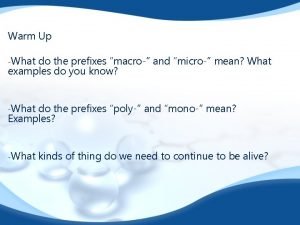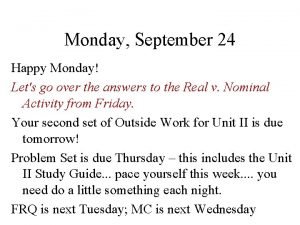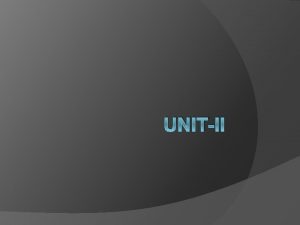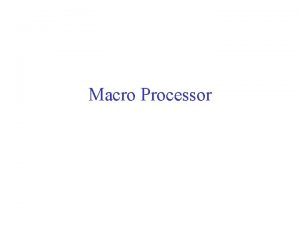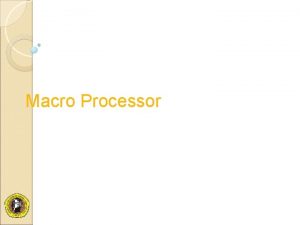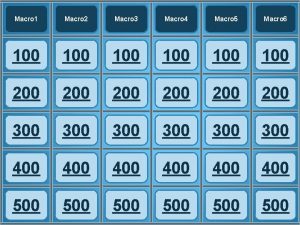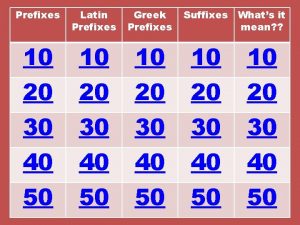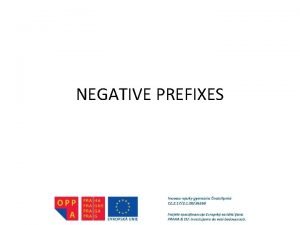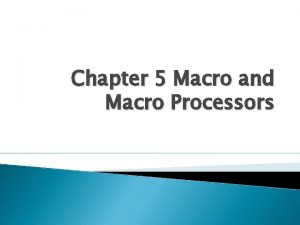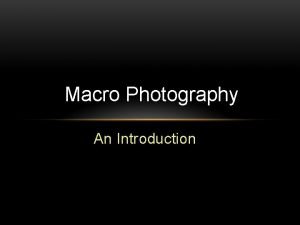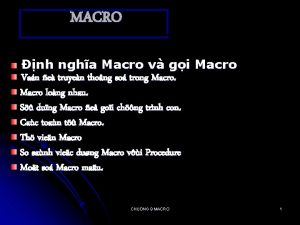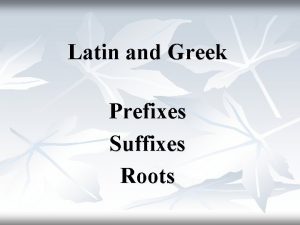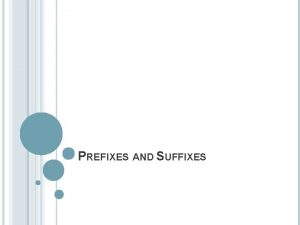Warm Up What do the prefixes macro and






















- Slides: 22

Warm Up -What do the prefixes “macro-” and “micro-” mean? What examples do you know? -What do the prefixes “poly-” and “mono-” mean? Examples? -What kinds of thing do we need to continue to be alive?

Share your response…

Warm Up -What do the prefixes “macro-” and “micro-” mean? What examples do you know? - Macro means large, Micro means small -What do the prefixes “poly-” and “mono-” mean? Examples? - Poly means many, Mono means one -What - kinds of thing do we need to continue to be alive? Food, Water, Air

Class Norms Ø Honor time limits Ø Actively Ø Listen Ø Place participate respectfully to your colleagues cell phones on vibrate or silent mode Ø Participants may write burning questions on a sticky note and place on the parking lot Ø BE PRESENT

Parking Lot Ø Burning Issues Ø Questions Ø Comments Ø Ideas to Share

Common Board Configuration DATE: September 4 -5, 2014 ESSENTIAL QUESTION: How do the different macromolecules meet our needs? Objectives: Ø Compare and contrast the basic molecular structures and primary functions of the four categories of macromolecules. Ø Identify examples of the four categories of macromolecules Home Learning: Ø Complete the Parent and Student Reflections for pages 17 -24 due 9/8 -9/9

Agenda Ø Interactive Journal Ø Macromolecules of Life Ø Complete Macromolecules Chart on page 34 ISN Ø Exit Ticket

Essential Question How do the different macromolecules meet our needs?

Macromolecules

Carbon atoms have unique bonding properties. Carbon molecules form covalent bonds with up to four other atoms, including other carbon atoms. • Carbon-based molecules have three general types of structures. – straight chain – branched chain – ring

Many carbon-based molecules are made of many small subunits bonded together. – Monomers are the individual subunits. – Polymers are made of many monomers.

Macromolecules They are Polymers There are four distinct macromolecules that are also carbon based found in all living things

Four main types of carbon-based molecules are found in living things. Carbohydrates are made of carbon, hydrogen, and oxygen and provide quick energy – Monomers are simple sugars.

• Lipids are nonpolar molecules grouped together called glycerols – Each carbon chain is called a fatty acid. Triglyceride

Lipids have several different functions. – broken down as a source of energy – make up cell membranes – used to make hormones

Proteins are polymers of amino acids (monomers). – Twenty different amino acids are used to build proteins in organisms.

Proteins differ in the number and order of amino acids. – This determines its function to build muscles Hemoglobin hydrogen bond – Incorrect amino acids change a protein’s structure and function.

Nucleic acids are polymers of monomers called nucleotides.

• Nucleic acids are polymers of monomers called nucleotides. • DNA stores genetic information. – RNA builds proteins. DNA RNA

Assignment Using your textbook (pgs 44 -48) complete the chart Once complete fold and glue into right side of interactive notebook

What macromolecule best describes these food items?

Name the macromolecule based on the structure
 Prefixes macro
Prefixes macro Happy monday answer key
Happy monday answer key Macro call is handled in this pass of macro processor
Macro call is handled in this pass of macro processor Dyna root word
Dyna root word Hát kết hợp bộ gõ cơ thể
Hát kết hợp bộ gõ cơ thể Frameset trong html5
Frameset trong html5 Bổ thể
Bổ thể Tỉ lệ cơ thể trẻ em
Tỉ lệ cơ thể trẻ em Gấu đi như thế nào
Gấu đi như thế nào Chụp phim tư thế worms-breton
Chụp phim tư thế worms-breton Chúa yêu trần thế
Chúa yêu trần thế Các môn thể thao bắt đầu bằng tiếng nhảy
Các môn thể thao bắt đầu bằng tiếng nhảy Thế nào là hệ số cao nhất
Thế nào là hệ số cao nhất Các châu lục và đại dương trên thế giới
Các châu lục và đại dương trên thế giới Công thức tính thế năng
Công thức tính thế năng Trời xanh đây là của chúng ta thể thơ
Trời xanh đây là của chúng ta thể thơ Mật thư anh em như thể tay chân
Mật thư anh em như thể tay chân Phép trừ bù
Phép trừ bù độ dài liên kết
độ dài liên kết Các châu lục và đại dương trên thế giới
Các châu lục và đại dương trên thế giới Thơ thất ngôn tứ tuyệt đường luật
Thơ thất ngôn tứ tuyệt đường luật Quá trình desamine hóa có thể tạo ra
Quá trình desamine hóa có thể tạo ra Một số thể thơ truyền thống
Một số thể thơ truyền thống
